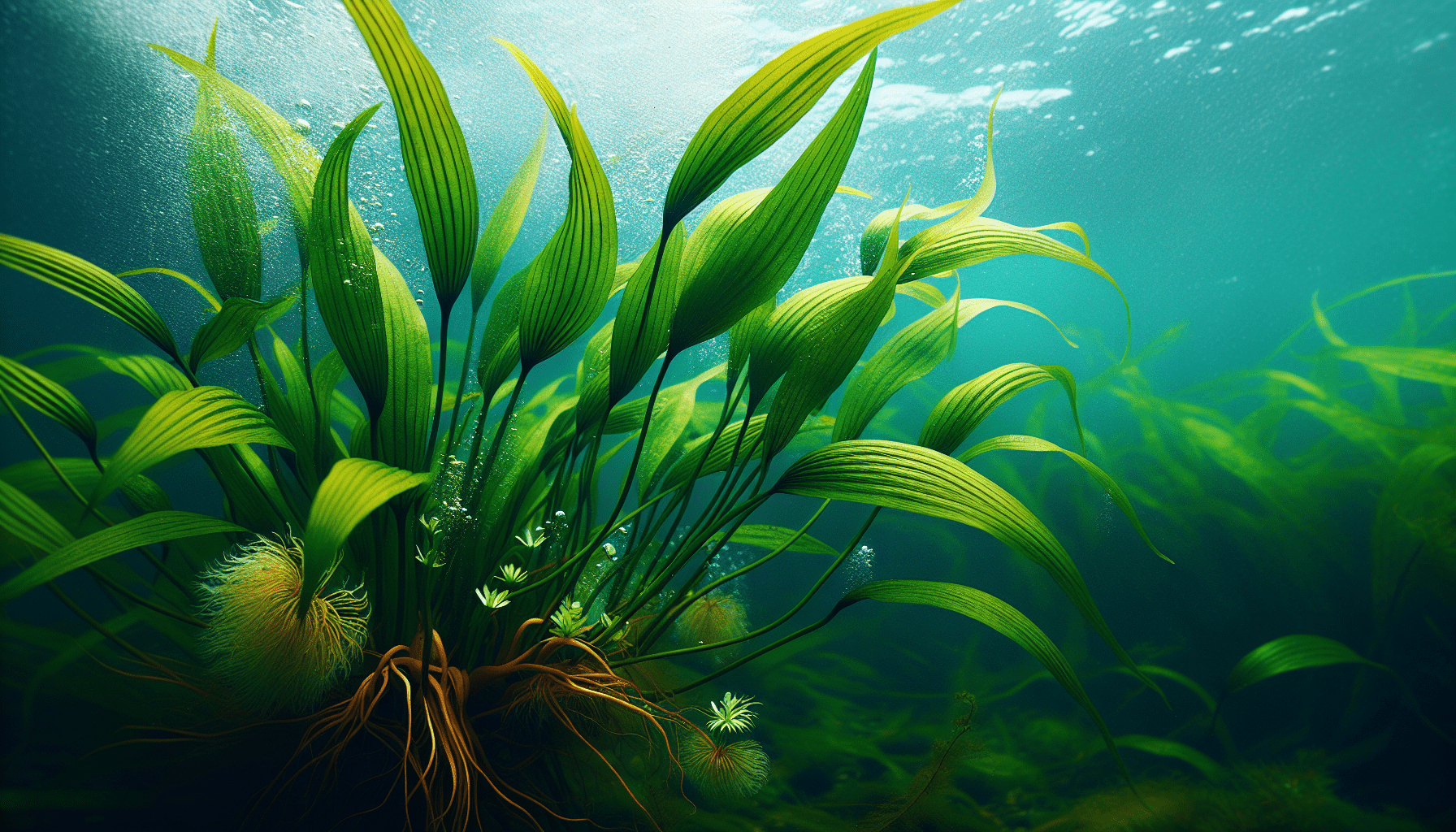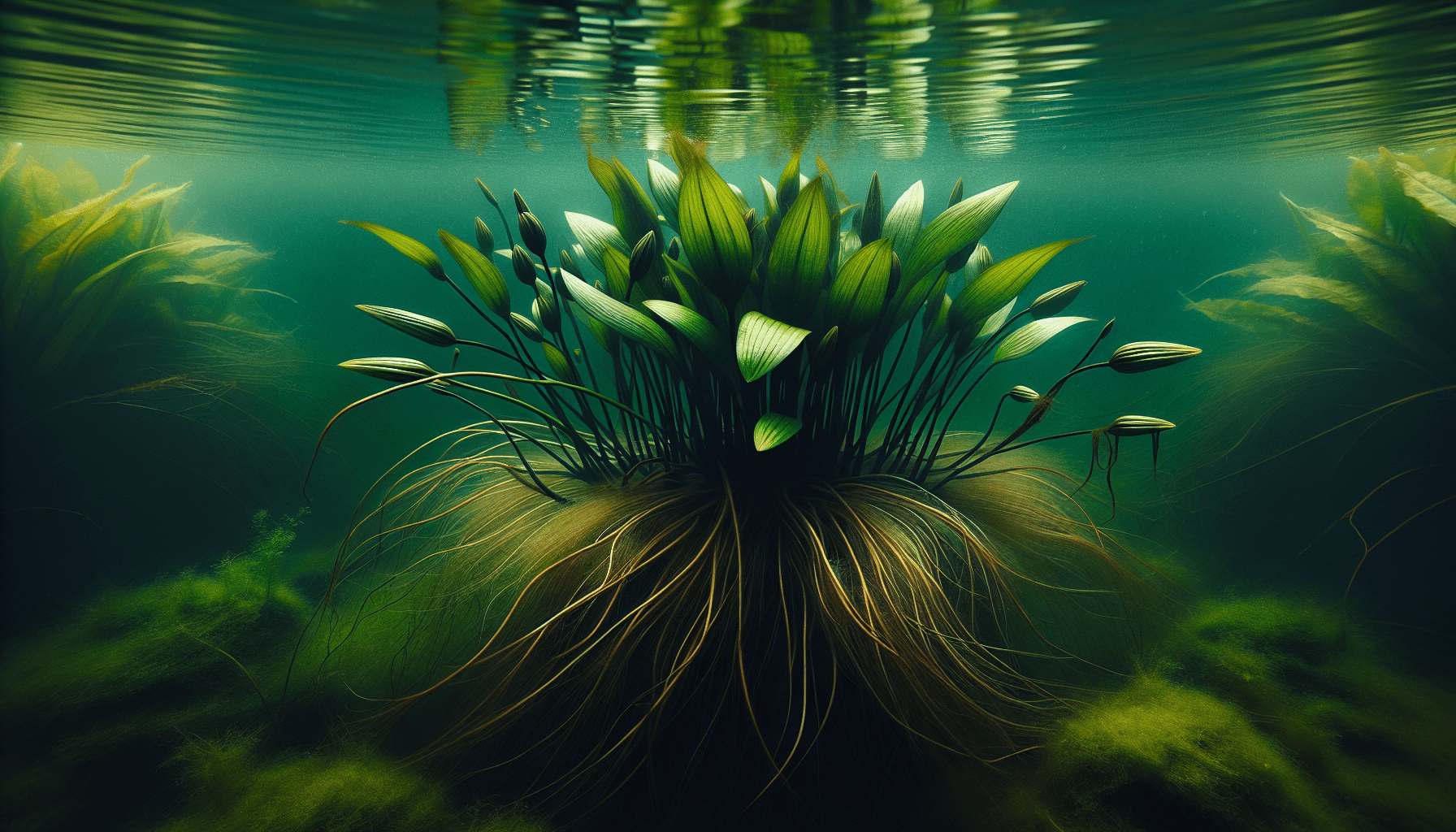Echinodorus Longiscapus, a subject of great interest within the field of aquatic plant studies, is an intriguing species that merits careful examination. This unique aquatic weed, cloaked in mystique due to its flexible long stems and wide leaf structures, is more than just an aquatic plant-to be studied and classified. The article ahead aims to shed light on Echinodorus Longiscapus — delving into its anatomy, growth pattern, environmental preferences, and even its potential utility. The task is not aimed at simply expanding your knowledge, rather, engendering an appreciation for Echinodorus Longiscapus as a significant part of our rich aquatic ecosystems.

Basic Description of Echinodorus Longiscapus
Echinodorus Longiscapus, commonly referred to as Long-Stalked Sword Plant or Long Scapus Amazon Sword, belongs to the robust family of aquatic plants, the Alismataceae. Existing in the shallow waters of subtropical and tropical regions, this plant species demonstrates a vigorous lifestyle and remarkable adaptability.
Scientific Classification of Echinodorus Longiscapus
In the scientific classification of taxonomy, Echinodorus Longiscapus falls under the kingdom Plantae, a vast kingdom encompassing all multicellular, eukaryotic, photosynthesizing organisms. Occupying the Alismataceae family, its distinct characteristics include thorously basal leaves, and intricate floral structures.
Physical Characteristics
Echinodorus Longiscapus exhibits a unique morphology with hardy rosette plants featuring long, slender, and pointed leaves. The leaves have a striking green color and span between 20 and 50 cm, providing an impressive underwater landscape in its natural settings.
Reproductive Traits
Reproduction in Echinodorus Longiscapus occurs primarily through vegetative propagation and not so frequently through seeds. It employs a unique form of asexual reproduction in which it develops runners. Here, new plantlets form at nodes and are eventually liberated to create a new individual.
Origins and Distribution of Echinodorus Longiscapus
Native Regions
Echinodorus Longiscapus is a native to Southern Brazil, primarily thriving in the river mouths and estuaries around the coast.
Areas of Global Spread
Despite its South American roots, the adaptable Echinodorus Longiscapus has spread its roots to different corners of the world. This includes subtropical and tropical regions across the globe where conditions permit its growth.
Ecology and Habitat of Echinodorus Longiscapus
Types of Aquatic Environments
As an aquatic plant, Echinodorus Longiscapus flourishes predominantly in freshwater environments. It favors subtropical and tropical climates, usually occupying wetlands, ponds, and edges of slow-moving rivers and streams.
Climate and Temperature Needs
They prefer climates where the water temperature fluctuates between 22 and 28 degrees Celsius. However, its robustness allows it to adapt to temperatures as low as 18 degrees Celsius.
Water Quality Preferences
Echinodorus Longiscapus is not particularly finicky about water quality. It can tolerate varying water conditions, displaying remarkable adaptability to changes in pH, hardness, and salinity.

Growth and Lifespan of Echinodorus Longiscapus
Growth Rate
Assuming the appropriate conditions, Echinodorus Longiscapus can grow quite rapidly.
Lifespan and Aging Process
While precise lifespan data is not available for this species, it is widely recognized that Echinodorus Longiscapus presents a durable aquatic plant lineage, prolonging its existence through vegetative propagation.
Cultivation and Care of Echinodorus Longiscapus
Planting Techniques
For cultivating Echinodorus Longiscapus in aquariums or ponds, plantlets should be planted individually, taking care to bury only the roots and not the crown of the plant.
Water and Nutrient Requirements
While Echinodorus Longiscapus can withstand varying water conditions, it flourishes in nutrient-rich substrates. Aquatic soils or fine gravel suffused with a robust nutrient base can provide for its needs.
Lighting Requirements
Echinodorus Longiscapus maintains a relatively low demand for light, making it an ideal species for beginner aquarists. However, access to moderate light can stimulate optimal growth and coloration.
Role of Echinodorus Longiscapus in Its Ecosystem
Biodiversity Contributions
It contributes significantly to biodiversity in its aquatic habitats, creating spawning grounds and nurseries for fishes and amphibians.
Interactions with Other Species
Echinodorus Longiscapus coexists harmoniously with different aquatic species in their natural habitats. It provides refuge and nutrients necessary for their survival and growth.
Effect on Water Quality
The plant also plays a valuable role in improving water quality. By absorbing excess nutrients from the water, it helps reduce algal blooms and other potential water contaminants.
Uses of Echinodorus Longiscapus
Aquarium Ornamental Use
Echinodorus Longiscapus is widely appreciated in the aquarium hobby for its aesthetic contributions. With its lush green leaves and sprawling growth patterns, it serves to add a striking depth to the aquarium foreground or background.
Role in Aquascaping
In aquascaping, it plays a crucial role as it offers an excellent focal point in the design, serving to generate a sense of scale and complexity.
Potential for Bioactive Compounds
While the search for bioactive compounds in Echinodorus Longiscapus warrants further study, the plant’s robust nature, rapid growth, and broad adaptability suggest potential utility in phytoremediation applications.
Potential Threats to Echinodorus Longiscapus
Predators and Diseases
Echinodorus Longiscapus faces few significant threats from predators or diseases in its natural habitats. However, in aquarium settings, susceptibility to rot can be an issue, requiring careful management of water quality and nutrient supply.
Environmental Threats
Environmental alterations impacting water quality, such as changes in temperature, pH, and salinity, can pose significant threats to its survival and growth.
Threats from Human Activities
Overexploitation in the aquarium trade or for ornamental use, coupled with habitat destruction due to development activities, also poses potential threats to the species’ conservation and availability.
Conservation Status of Echinodorus Longiscapus
Current Conservation Status
As of this writing, the precise conservation status of Echinodorus Longiscapus is not clearly known. However, given its widespread distribution and high adaptability, it is not typically considered threatened.
Efforts to Protect and Preserve
Despite this, stewards of aquatic life continue to encourage responsible cultivation and trade of Echinodorus Longiscapus to ensure that its natural habitats remain unharmed.
Research and Studies on Echinodorus Longiscapus
Past Studies and Their Findings
Although specific past studies on Echinodorus Longiscapus are not readily found, several general studies on aquatic plants, notably their roles in ecosystem dynamics, water purification, and biological diversity, likely included this adaptable species.
Ongoing Research
As a key player in aquatic ecosystems, ongoing research on Echinodorus Longiscapus revolves around understanding its physiological and genetic traits.
Potential Areas for Future Study
Future research may delve into its potential for bioactive compounds and its wider applications in bioremediation and phytoremediation. Considering the Echinodorus Longiscapus’s high adaptability, studies could also assess its potential as a climate change-resilient species in changing aquatic conditions.
In conclusion, Echinodorus Longiscapus is a versatile and resilient aquatic plant species possessing impressive qualities of adaptability and longevity. Despite the many challenges that it faces, its characteristics contribute significantly to aquatic biodiversity, making its study, cultivation and conservation vital for the preservation of aquatic habitats globally.